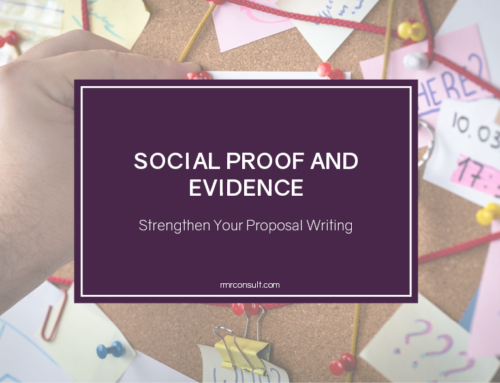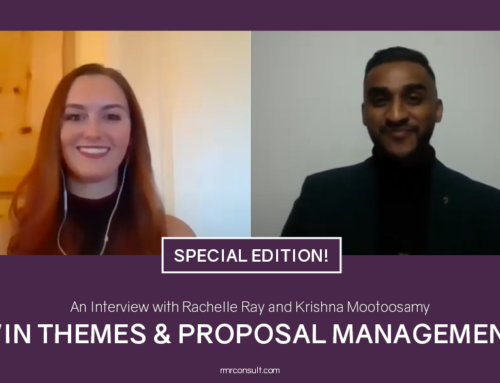Unasked Questions: How much information is too much?
Responding to an RFP can often feel like a balancing act. How much information do you need to provide to be responsive? How much information can you provide, given page or formatting restrictions? Writing a proposal can also feel like playing a guessing game, where you spend hours trying to determine exactly what the client wants to see and how best to present that information. If the RFP didn’t specifically ask for cost or schedule information, for example, do you provide that information in your proposal?
The Unasked Questions
Ambiguities in an RFP put us in a tough spot. These ‘unknowns’ are what I refer to as the unasked questions. Sometimes they’re implied. The client has asked for your cost control methodology, for example, and you might make a reasonable assumption that showing recent estimated vs. final project costs could support your narrative response. The RFP hasn’t asked for that information outright, but it seems logical to include it.
Sometimes these unasked questions are poorly defined, like ‘provide schedule information for your five most recent similar projects.’ What does ‘provide schedule information’ mean exactly? Does the client want project start and end dates? Do they want a detailed breakdown of each phase of the project? Do they want comparisons of the initial vs. final schedules? Or do they want you to discuss schedule delays?
Defining the Unasked Questions
There is no magic answer for figuring out how to approach the unasked questions. There are, however, steps you can take to make them a little less ambiguous.
1. Request clarifications from the procurement manager.
I have often found that clients publish their RFPs thinking the requirements and questions are clear. They know that they’re asking, so they assume we know what they’re asking. Unfortunately, that isn’t always the case.
Reaching out to a procurement manager to clarify questions or RFP requirements can help you to better understand what the client is asking of you. It can sometimes help the client better understand what they have asked and the responses they are likely to receive as well.
Be specific in your requests for clarification. If you’re unsure of how to clarify something, I recommend reading my guide to handling difficult RFPs. Even if you don’t have a convoluted and confusing RFP, the tips for interacting with procurement managers can help you obtain the best possible responses.
2. Use what you know about the client.
If you’ve had the opportunity to get to know the client before the RFP dropped, then you should already have a good idea of what their hot button issues are. You can use this information to determine how thoroughly you need to respond to an ‘unasked’ question. For example, suppose you know the client is concerned with the schedule. In that case, you can make a reasonable assumption that including detailed schedule information for your projects showing on-time or early completions would strengthen your position as the firm that can deliver on time.
If you hadn’t had the opportunity to get to know the client before the RFP dropped, don’t worry. I recommend checking out my guide to creating a client profile. It will help you identify potential client challenges, which will help you define a win theme, which will help you determine the level of depth you need to go into for ambiguous questions.
3. Debrief and look at past examples (if possible).
We often propose on projects with the same clients. Usually, the projects change, but the RFPs stay relatively similar. This continuity can be a benefit because it allows us to look to past proposals and see what we did well and what we can improve upon. If you’ve had the opportunity to debrief with a client in the past, you can use their comments or even the scoring distribution (if provided) to identify areas you might need to expand on.
Even if you haven’t had the opportunity to debrief, you can still try to look at past proposals with a neutral perspective. What would you change? Are there any areas that aren’t as clear as you thought they were before? Did you overemphasize one ‘unasked’ question but downplay another?
Answering the Unasked Questions
Ultimately, the best way to approach ‘unasked’ or ambiguous, poorly defined questions is to view them through the lens of your win theme. What level of information is necessary to speak to the client’s challenge, your firm’s attributes and advantages? How far do you need to go to prove your abilities?
Responding to the Challenge
When looking at an unasked question, consider it from the client’s perspective. What is the client’s challenge? What do they care about? Do any of the questions relate to an identified challenge? If so, you probably want to put more effort and detail into responding to that question.
Now, how can you speak to solving their issues, overcoming their challenges, in your responses?
Emphasizing your Attributes
Are there specific details you can include in your proposal that would show the features you bring to the table? For instance, if your firm’s focus is sustainability and you know the client cares deeply about sustainable design, can you include specific details of sustainable solutions in past projects?
Playing up your Advantage
What information can you provide to reinforce the advantage your firm provides over the competition? If one of your advantages is related to superior project management, can you provide a detailed breakdown of your project management processes and procedures? Can you then tie those details to the desired outcome (overcoming the challenge) for the client?
Providing Proof
Remember that providing proof of your abilities or evidence of past successes solving similar challenges is an important step in solidifying your win theme. What details from the proof you’re providing are necessary to respond to a question? What details will support answering the question fully?
As with most aspects of proposal writing, there aren’t ‘cut and dry’ answers for how to approach poorly worded or ambiguous questions. Responding to an ‘unasked’ question through the lens of your win theme is one strategic approach, though.






Leave A Comment